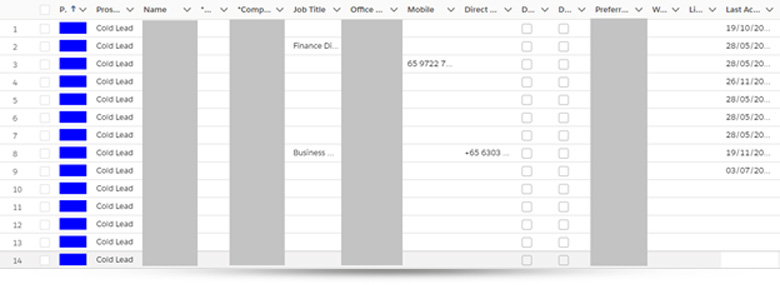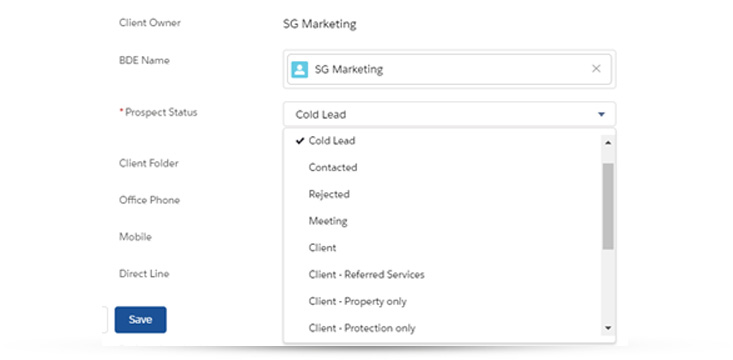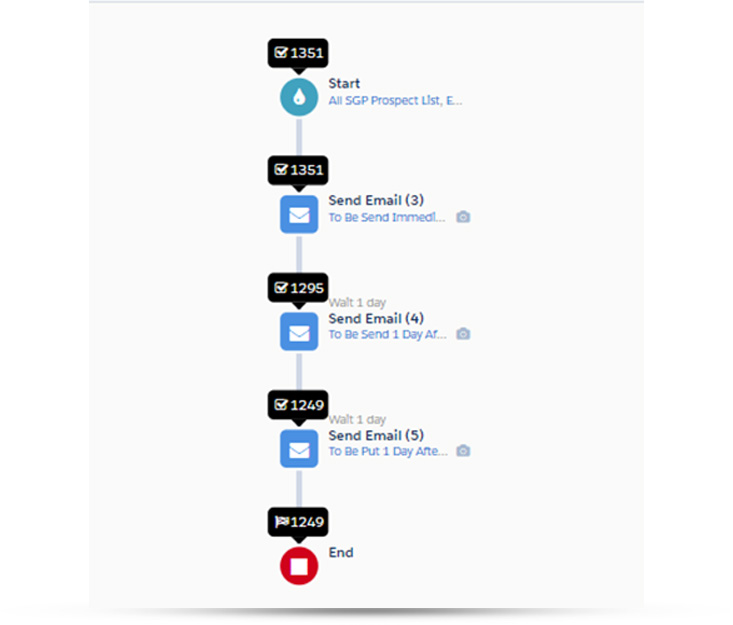St. James’ Place - Salesforce
Client Story
At A Glance

78%
increase in MQL to SQL conversion

32%
increase in SQL to client conversion
Client Testimonial

Backstory
Founded in 1992, St. James’ Place is a UK-based wealth management company that expanded to Asia in 2014.
With offices in Hong Kong, Singapore, and Mainland China, it is one of the largest wealth management companies catering to high-net-worth individuals, families and business owners, across the local and expatriate communities in Asia.
St. James’ Place maintains a thorough understanding of their clients’ financial needs and aspirations and is committed to offering bespoke advice, covering insurance solutions, retirement planning, investment advice, and intergenerational wealth planning.
Backstory

Founded in 1992, St. James’ Place is a UK-based wealth management company that expanded to Asia in 2014.
With offices in Hong Kong, Singapore, and Mainland China, it is one of the largest wealth management companies catering to high-net-worth individuals, families and business owners, across the local and expatriate communities in Asia.
St. James’ Place maintains a thorough understanding of their clients’ financial needs and aspirations and is committed to offering bespoke advice, covering insurance solutions, retirement planning, investment advice, and intergenerational wealth planning.
Challenge

Challenge

Brew Interactive’s association with St. James’ Place began in September 2019 when they approached us to help them drive new leads and fuel their sales pipeline. Before we came on board, they were relying on traditional lead generation methods and were incurring a high cost per lead in return for a handful of leads.
We strategized with the marketing team and came up with monthly and quarterly lead generation campaign ideas to acquire new leads which were then passed over to their financial advisors to close.
While St. James’ Place saw a spike in leads generated, their challenges were far from over.

Poor lead management
Even though they were attracting a steady flow of leads, they failed to manage those leads effectively. There was no record of the lead source and activity due to which their financial advisors (sales team) were unable to follow up with the leads generated by the marketing team.
St. James’ Place’s lead management practices were outdated, inefficient and time-consuming, leading to lapses in follow-ups and missed sales opportunities.
So, in spite of generating a high volume of leads, they failed to convert them effectively due to mismanagement and lack of alignment between the sales and marketing teams.

Slow sales cycle
St. James’ Place realized that their sales cycle was long and slow. Their financial advisors were unable to follow-up with the leads and close deals quickly. There was too much guesswork involved and they ended up wasting time on the unimportant leads.
In order to grow their business, St. James’ Place realized that they needed to accelerate their sales pipeline and speed up the process.

Solution
Solution

The objective given to us was to increase conversions by streamlining the MQL to SQL transition and boost the sales process to make it easier, faster and effective.
After having analyzed the gaps in their lead management and sales process, we decided it was time to introduce marketing automation into their business. That was the only way to manage, engage and nurture leads to seamlessly move them through the sales cycle.
1. Integrated Salesforce and Pardot
Being a Salesforce-owned product, we decided to opt for Pardot as the marketing automation solution. We led the Pardot implementation and were able to sync the data in less than two weeks.
Due to this integration, any leads or information gathered by the marketing team automatically appeared on the CRM and could be easily accessed by their sales team. This eliminated any sort of manual entry and improved alignment between the two teams.
 Lead details on Salesforce
Lead details on Salesforce
Apart from that, we also simplified the sales cycle by establishing specific lead qualification criteria. Not only did this ensure everyone was on the same page but it also helped the teams track progress and prevent leaks in the sales pipeline.
Every stage of the buying cycle was mapped out in order to seamlessly manage leads from the time they enter the funnel until the close of the sale.
 Lead details on Salesforce
Lead details on Salesforce
2. Built an email journey to turn MQLs to SQLs
We built an email journey using Pardot with the sole objective to nurture leads and move them from MQL to SQL. The idea was to engage prospects and deliver personalized experiences by sending the right message to the right lead at the right time.
We built email journeys for all the different lead generation campaigns we ran.
Here’s an example of an onboarding email journey to welcome new leads.

Let’s take a detailed look at this journey – once a prospect shows interest and opts in, they are immediately sent an email, thanking them for their interest. This email was aimed at introducing St. James’ Place and how they can be of help.
 Welcome email
Welcome email
After one day, prospects were sent another email. This email educated them on what makes St. James’ Place different and how they can customize their solutions to meet varying needs
 Email sent after day 1
Email sent after day 1
This email ended with a clear call-to-action which encouraged users to click on it if they wanted to inquire more about St. James’ Place’s services. On clicking on the button, prospects were directed to a landing page.
 ‘Contact us’ landing page
‘Contact us’ landing page
The idea behind this landing page was to acquire further information on the leads and move them from the MQL to the SQL stage.
 Journey Summary
Journey Summary
Results
Automating the lead nurturing process proved to be beneficial. By streamlining the process, not only did we achieve a higher MQL to SQL conversion but also obtained an increase in SQL to client conversion.
Recent Case Studies
Want similar results?
Get in touch to see how we can help.
BREW INTERACTIVE
Digital Marketing Agency in Singapore
SERVICES
SERVICES
SUBSCRIBE
CONTACT US
111 North Bridge Road, #08-11, Singapore 179098 info@brewinteractive.com







